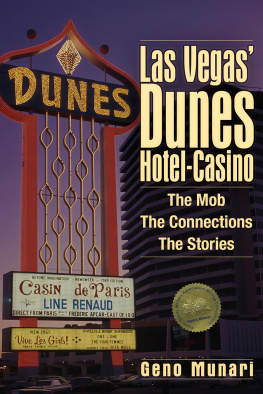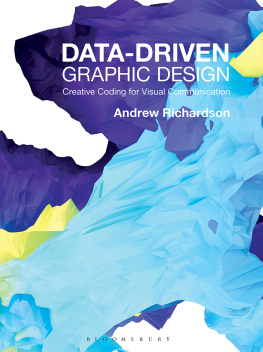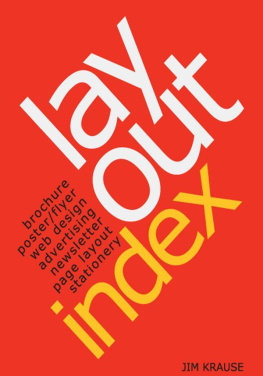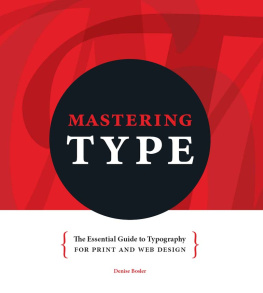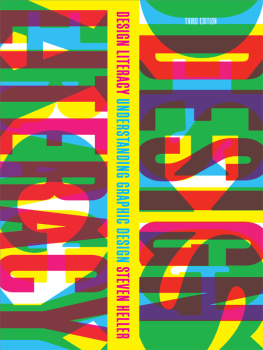Bruno Munari was a well-known. Milanese designer and graphic artist who was twice awarded the Compasso dOro for excellence in his field. Known for his researches in visual communication and cinematography, various exhibitions of his work have been held in Europe, the United States and Japan. He died in 1998.
BRUNO MUNARI
DESIGN
AS
ART
Translated by Patrick Creagh

PENGUIN BOOKS
PENGUIN CLASSICS
Published by the Penguin Group
Penguin Books Ltd, 80 Strand, London WC2R 0RL , England
Penguin Group (USA) Inc., 375 Hudson Street, New York, New York 10014, USA
Penguin Group (Canada), 90 Eglinton Avenue East, Suite 700, Toronto, Ontario,
Canada M4P 2Y3 (a division of Pearson Penguin Canada Inc.)
Penguin Ireland, 25 St Stephens Green, Dublin 2, Ireland
a division of Penguin Books Ltd)
Penguin Group (Australia), 250 Camberwell Road, Camberwell,
Victoria 3124, Australia (a division of Pearson Australia Group Pty Ltd)
Penguin Books India Pvt Ltd, 11 Community Centre,
Panchsheel Park, New Delhi 110 017, India
Penguin Group (NZ), 67 Apollo Drive, Rosedale, North Shore 0632,
New Zealand (a division of Pearson New Zealand Ltd)
Penguin Books (South Africa) (Pty) Ltd, 24 Sturdee Avenue,
Rosebank, Johannesburg 2196, South Africa
Penguin Books Ltd, Registered Offices: 80 Strand, London WC2R 0RL , England
First published by Editori Laterza 1966
Published in Pelican Books 1971
Reissued in Penguin Modern Classics 2008
1
Copyright Bruno Munari, 1966
Translation copyright Patrick Creagh, 1971
All rights reserved
The moral right of the author has been asserted
Except in the United States of America, this book is sold subject to the condition that it shall not, by way of trade or otherwise, be lent, re-sold, hired out, or otherwise circulated without the publishers prior consent in any form of binding or cover other than that in which it is published and without a similar condition including this condition being imposed on the subsequent purchaser
978-0-14-192080-1
CONTENTS
An artist is a man who digests his own subjective impressions and knows how to find a general objective meaning in them, and how to express them in a convincing form.
MAXIM GORKY
PREFACE TO THE ENGLISH EDITION
In art exhibitions we see less and less of oil paintings on canvas and pieces of sculpture in marble or bronze. Instead we see a growing number of objects made in all sorts of ways of all sorts of materials, things that have no connection with the old-fashioned categories of the visual arts. In the old days of painting these materials and techniques were very much looked down on as inhuman and unworthy of being the vehicles of a Work of Art.
But even in the recent past both painting and sculpture began to lose a few of their bits and pieces. The literary element in a visual work of art was the first to be discarded in favour of pure visuality (Seurat), and it was understood that with the means proper to the visual arts one could say many things that could not be put into words. It was therefore left to literature to tell stories. The disappearance of narrative led to the disappearance of the forms that imitated visible nature, and (with Kandinsky) the first abstract forms entered the scene. These still had shades of colouring, but this naturalistic and representative element was discarded (by Mondrian) in favour of a colour and form that was simply itself and nothing else. From this point it is practically inevitable that we should end up with paintings that are all of one colour (Klein). This version of the story is rather compressed, but these at any rate are the essential stages in the disappearance of the old categories in art. Eventually the picture is punctured, slashed or burnt alive (Fontana, Burri), and this is the last farewell to techniques that no longer had anything to say to modern man.
The artists of today are busily looking for something that will once again interest the people of today, distracted as they are by a multitude of visual stimuli all clamouring for their attention. If you go to an art exhibition today you may see very simple objects that are so huge that they fill the whole room, some based on statics and others on kinetics. You will find stainless steel used in conjunction with seagull droppings, laminated plastics of every conceivable kind, rigid or inflatable transparent plastic, bits of scrap metal soldered together, and live animals. The artist wants to make the viewer participate at all costs. He is looking for a point of contact, and he wants to sell his works of art in the chain stores just like any other commercial article, stripped of its mystery and at a reasonable price.
But what is at the bottom of this anxiety that drives artists to abandon safe traditional techniques and certain markets, and to sell mass-produced articles in shops and not in galleries?
It is probably the desire to get back into society, to re-establish contact with their neighbours, to create an art for everyone and not just for the chosen few with bags of money. Artists want to recover the public that has long ago deserted the art galleries, and to break the closed circle of Artist Dealer Critic Gallery Collector.
They want to destroy the myth of the Great Artist, of the enormously costly Masterpiece, of the one and only unique divine Thing.
They have realized that at the present time subjective values are losing their importance in favour of objective values that can be understood by a greater number of people.
And if the aim is to mass-produce objects for sale to a wide public at low price, then it becomes a problem of method and design. The artist has to regain the modesty he had when art was just a trade, and instead of despising the very public he is trying to interest he must discover its needs and make contact with it again. This is the reason why the traditional artist is being transformed into the designer, and as I myself have undergone this transformation in the course of my working career I can say that this book of mine is also a kind of diary in which I try to see the why and wherefore of this metamorphosis.
1970
BRUNO MUNARI
PREFACE
The Useless Machines
Lots of people know of me as You know, the man who made the useless machines, and even today I still occasionally get asked for one of these objects, which I designed and made in about 1933. That was the time when the movement called the novecento italiano ruled the roost, with its High Court of super-serious masters, and all the art magazines spoke of nothing else but their granitic artistic productions; and everyone laughed at me and my useless machines. They laughed all the harder because my machines were made of cardboard painted in plain colours, and sometimes a glass bubble, while the whole thing was held together with the frailest of wooden rods and bits of thread. They had to be light so as to turn with the slightest movement of the air, and the thread was just the thing to prevent them getting twisted up.
But all my friends rocked with laughter, even those I most admired for the energy they put into their own work. Nearly all of them had one of my useless machines at home, but they kept them in the childrens rooms because they were absurd and practically worthless, while their sitting-rooms were adorned with the sculpture of Marino Marini and paintings by Carr and Sironi. Certainly, in comparison with a painting by Sironi, scored deeply by the lions claw of feeling, I with my thread and cardboard could hardly expect to be taken seriously.



